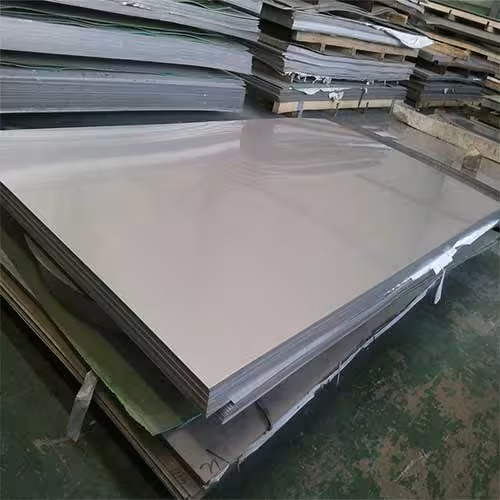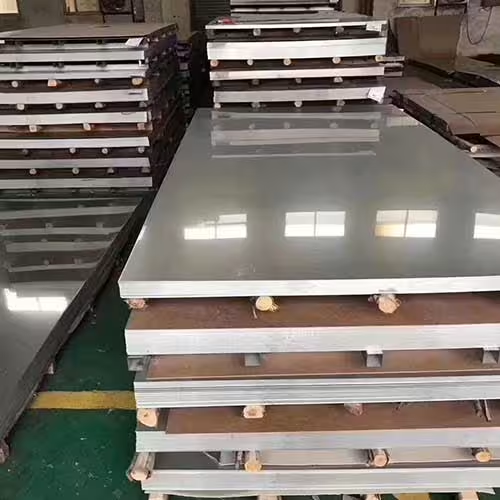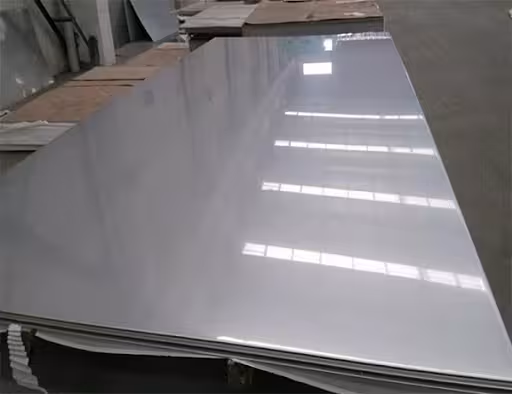Welcome to My Blog!
Before we dive into the content, I’d love for you to join me on my social media platforms where I share more insights, engage with the community, and post updates. Here’s how you can connect with me:
Facebook:https://www.facebook.com/profile.php?id=61565500692293
Now, let’s get started on our journey together. I hope you find the content here insightful, engaging, and valuable.
Table of Contents
Introduction

304 stainless steel is one of the most widely used stainless steel alloys, known for its corrosion resistance, durability, and versatility. It is commonly used in a wide range of industries, from food processing and medical equipment to architecture and construction. One of the most popular forms of 304 stainless steel is the 304 stainless steel plate, which is utilized for various applications that require high strength, formability, and resistance to environmental factors.
This blog will provide an in-depth look at the key features and benefits of 304 stainless steel plates, explaining why they are a preferred choice for many industries. We will also explore their applications, factors to consider when choosing them, and frequently asked questions about this material.
Key Features of 304 Stainless Steel Plate


Corrosion Resistance
One of the standout features of 304 stainless steel plates is their exceptional corrosion resistance. Made from an alloy of iron, chromium, nickel, and a small amount of other metals, 304 stainless steel resists corrosion from many environmental factors, including humidity, air, and some chemicals. This makes it ideal for use in industries where exposure to moisture and corrosive substances is common.
- Ideal for humid environments
- Resistant to oxidation and rust
- Protective layer that doesn’t require frequent maintenance
High Strength and Durability
304 stainless steel plates are known for their strength and durability, making them an ideal choice for structural applications. They can withstand significant weight and stress without deforming, making them suitable for heavy-duty machinery and structural components. Additionally, they retain their strength at elevated temperatures, maintaining their shape and integrity in high-heat environments.
- Capable of withstanding high mechanical loads
- Maintains structural integrity in high-temperature settings
- Excellent fatigue resistance
Versatility and Workability
304 stainless steel plates offer excellent versatility in terms of shaping and fabricating. They can be cut, welded, drilled, and formed into a wide variety of shapes and sizes. This flexibility makes them an excellent material for custom designs and complex applications.
- Easily fabricated into different shapes
- Compatible with various welding techniques
- Available in a wide range of sizes and thicknesses
Hygienic Properties
Another key benefit of 304 stainless steel plates is their hygienic properties. Due to their smooth surface, they are easy to clean and sanitize, making them ideal for industries such as food processing, pharmaceuticals, and healthcare. Their resistance to bacterial growth and staining ensures a high level of cleanliness and safety for both workers and consumers.
- Non-porous surface for easy cleaning
- Resistant to microbial growth
- Ideal for use in sterile environments
Aesthetic Appeal
304 stainless steel plates offer a sleek, modern, and polished appearance, making them a popular choice for applications where aesthetics matter. Whether in architectural designs, interior decorations, or kitchen appliances, 304 stainless steel plates maintain a shiny, reflective surface that looks great while remaining highly functional.
- Shiny and reflective finish
- Used in both industrial and decorative applications
- Adds modern appeal to architectural designs
Common Applications of 304 Stainless Steel Plate
304 stainless steel plates are used in a variety of industries and applications due to their unique properties. Some of the most common applications include:
- Construction and Architecture: Structural components, facades, and roofs
- Food and Beverage Industry: Equipment, storage tanks, and countertops
- Medical Industry: Surgical instruments, medical devices, and hospital equipment
- Chemical Processing: Tanks, piping, and machinery for handling chemicals
- Automotive: Exhaust systems, mufflers, and catalytic converters
Comparison of 304 Stainless Steel Plate vs. Other Stainless Steel Alloys
| Feature | 304 Stainless Steel | 316 Stainless Steel | 410 Stainless Steel |
|---|---|---|---|
| Corrosion Resistance | High | Excellent | Moderate |
| Strength | High | High | Medium |
| Cost | Moderate | High | Low |
| Heat Resistance | Good | Excellent | Good |
| Fabrication Ease | Easy | Easy | Difficult |
| Applications | Versatile | Marine, Chemical | Automotive, Tools |
How to Choose the Right 304 Stainless Steel Plate for Your Application

Determine the Required Thickness
The thickness of the 304 stainless steel plate depends on the application. For structural components, a thicker plate may be required for added strength, while thinner plates may be used for decorative or light-duty applications.
Consider the Surface Finish
304 stainless steel plates come in various finishes, including mirror-polished, brushed, and matte. The choice of finish depends on the aesthetic preference and functional requirements, such as anti-reflective properties or the need for easy cleaning.
Assess the Environmental Conditions
If the application involves exposure to harsh chemicals, high temperatures, or moisture, consider how the environment may impact the performance of the stainless steel. Choosing a plate with superior corrosion resistance or one designed for high-temperature use may be necessary.
Evaluate Cost vs. Benefit
While 304 stainless steel plates are cost-effective, it’s essential to balance the price with the long-term benefits. Consider the durability and performance of the material, particularly in high-stress or corrosive environments, to determine whether a higher-quality material like 316 stainless steel might be more suitable.
Review the Material Certification and Standards
Ensure the 304 stainless steel plate meets industry standards and certifications. Look for certifications like ASTM, AISI, or ISO to ensure the material adheres to quality specifications for your specific application.
Conclusion
304 stainless steel plates are a versatile and durable material used across many industries, offering a range of benefits such as corrosion resistance, strength, and ease of fabrication. Whether for structural components, food processing equipment, or decorative applications, 304 stainless steel provides exceptional performance and long-lasting reliability.
When selecting the right 304 stainless steel plate for your application, it is essential to consider factors like thickness, surface finish, environmental conditions, and material certification to ensure you make the best choice.
FAQ
What are the main advantages of 304 stainless steel plates?
304 stainless steel plates are known for their corrosion resistance, high strength, and versatility. They are ideal for a wide range of applications, from construction to medical equipment.
How can I determine the thickness of 304 stainless steel plates I need?
The required thickness depends on the specific application and the weight or stress the plate will endure. For structural applications, thicker plates are needed, while decorative or light-duty applications can use thinner plates.
Is 304 stainless steel plate resistant to rust?
Yes, 304 stainless steel is highly resistant to rust due to its chromium content, which forms a protective layer on the surface to prevent oxidation.
Can 304 stainless steel plates be welded?
Yes, 304 stainless steel is highly weldable, making it suitable for various fabrication processes, including welding, bending, and cutting.
Are 304 stainless steel plates suitable for outdoor use?
304 stainless steel plates can be used outdoors as they are resistant to corrosion, but in harsh environments like coastal areas with salt exposure, 316 stainless steel may be a better choice due to its superior resistance to chloride corrosion.

